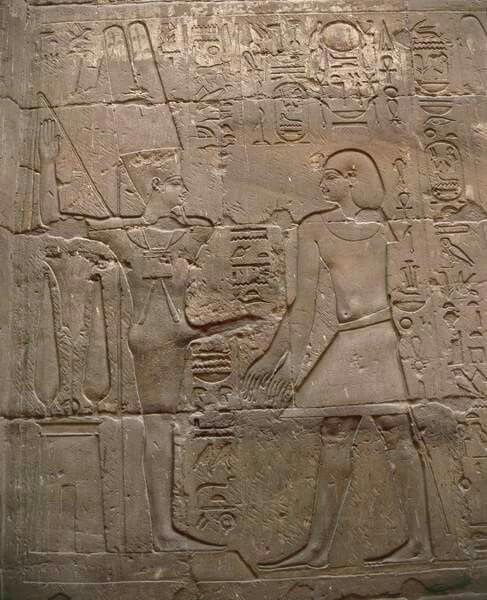You are out of line, MagsJ.

The article proposes that Jesus was just one of a series of sign prophets that were reported in Josephus’ works. It offers a careful reading of the Testimonium Flavianum (TF) as well as a comparative reading of Josephus’ sign prophet passages. After identifying five different layers of the TF, it lists the sign prophets mentioned by Josephus, compares Jesus and the sign prophets, and suggests that Jesus’ original eschatological sign was excised from the TF. The essay concludes that Jesus like other sign prophets attempted to force the end and initiate the new age and that the group that followed Jesus expected supernatural intervention and gathered because they really thought God would intervene.
https://www.youtube.com/live/tzclNGgMbqM?si=6SG4SIL15lwrTm6g
Helen Katharine Bond FRSE (born 1968) is a British Professor of Christian Origins and New Testament. She has written many books related to Jesus, Pontius Pilate and Judaism.
Amen. ![]()
.
The Book of Enoch was excluded from both the formal canon of the Tanakh and the Septuagint and therefore, also from the writings known today as the Deuterocanon. The main reason for Jewish rejection of the book is that it is inconsistent with the teachings of the Torah .
…and the rest:
.
The Book That PROVES Jesus was REAL ‘The Case for Christ’:
Distefano’s arguments are largely incoherent and unsubstantiated. Let’s start with his first argument regarding Alexander the Great.
“If, for whatever bizarre reason, you are only willing to believe someone existed if we have direct archaeological evidence of them, then you are also in luck here. You see, we have all kinds of overwhelming archaeological evidence of Alexander the Great’s existence because he was the king of a large swathe of the literate world at the time when he was alive. Perhaps the most impressive evidence of him comes in the form of contemporary Babylonian accounts of him inscribed in clay tablets.
For instance, the Alexander Chronicle, is a Babylonian account inscribed on clay tablets and dated to 330 BC recording Alexander the Great’s victory over Darius III in the Battle of Gaugamela in late September or early October 331 BC and his pursuit of the Persian traitor Bessos, who had murdered Darius III in July 330 BC. Here is a photograph of the tablet itself:
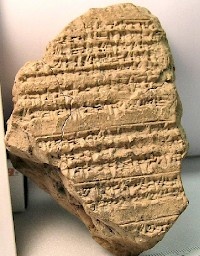
There is also another surviving Babylonian cuneiform tablet contemporary to Alexander that talks about him. Known as the Chronicle Concerning Alexander and Arabia, it describes some of the events of the last few years of Alexander’s reign. Here is a photograph of it:
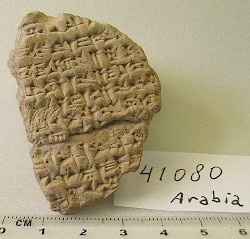
So, if Alexander never existed, why is there a Babylonian account of his victory at Gaugamela from one year after it happened? Likewise, if Alexander the Great never ruled, why is there a contemporary Babylonian account describing the last few years of his reign?
Greek and Egyptian inscriptions
There are also numerous inscriptions written in Greek, Egyptian hieroglyphics, and other languages mentioning Alexander that are contemporary to Alexander’s own lifetime. For instance, here is an inscription dating to c. 330 BC from the city of Priene commemorating Alexander the Great’s dedication of the Temple of Athena Polias there. The inscription clearly reads in Ancient Greek: “King Alexander dedicated [this temple] to Athena Polias.”
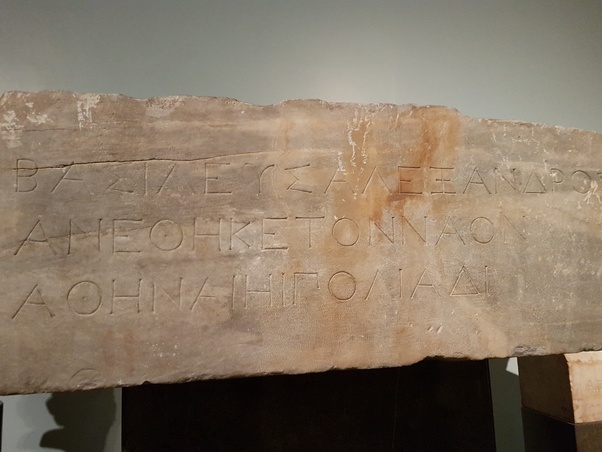
This inscription is currently on display in the British Museum. You can visit it there any time you like. If Alexander the Great never existed, then how did he dedicate a temple to Athena Polias at Priene in c. 330 BC?
We also have mentions of Alexander in Egyptian hieroglyphic inscriptions. Here is an Egyptian inscription dating to c. 332 BC with Alexander the Great’s name written in Egyptian hieroglyphics:
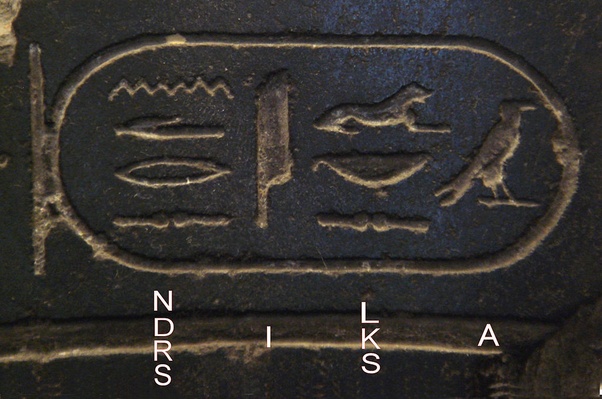
Here is an Egyptian carving depicting Alexander addressing the god Min from the Luxor Temple in Luxor, Egypt. His name is inscribed over his head in Egyptian hieroglyphics, clearly indicating that this is supposed to be him:
Contemporary and posthumous coins with his name and face on them
Then you have to take into account the hundreds upon hundreds of surviving coins with Alexander the Great’s name and face on them, some of them contemporary. Here is a silver coin with Alexander’s face on the obverse and his name clearly written on the reverse, minted c. 333 – c. 327 BC in Kilikia while Alexander was still alive:
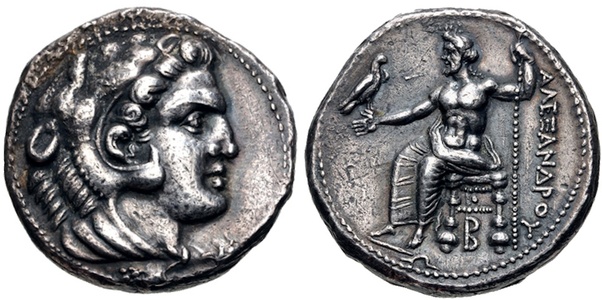
So, if Alexander the Great did not exist, why were people minting coins with his name and face on them during his lifetime?
There are countless of these coins. In fact, there are so many of these coins you can literally buy them online. Some of the lesser-value coins in poorer condition are fairly cheap.
Alexander’s successors kept minting coins with Alexander’s name and face on them even after Alexander was dead. Here is a another silver coin with Alexander the Great’s name and face on it, minted by the Kingdom of Makedonia between c. 322 and c. 320 during the reign of Alexander’s successor Antipatros, within just a few years after Alexander’s death:
[image]
Alexander sarcophagus
Another piece of archaeological evidence of Alexander the Great’s exploits is the famed Alexander Sarcophagus, a remarkably well-preserved Hellenistic marble sarcophagus from Sidon dating to the fourth century BC, within a few decades of Alexander the Great’s lifetime. The carvings on the sarcophagus depict Alexander the Great’s conquests. Here is a photograph of it:
[image]
It is currently held in the Istanbul Archaeological Museum in Istanbul. You can visit it there anytime you like.
Land bridge of Tyre
If all this evidence has failed to persuade you that Alexander the Great really existed, there is also this:
[image]
Do you know what this is?
This is the site of the ancient city of Tyre. As you can see, now it is on a peninsula attached to the mainland, but it was not originally. Originally, Tyre was on an island off the coast, but Alexander the Great, during his siege of Tyre in 332 BC, built a land bridge from the coast to the island.
[image]
Eventually, over time, that land bridge became larger and Tyre became permanently linked to the coast of Asia.
The entire Hellenistic Era
Finally, we have what is perhaps our greatest piece of evidence in favor of the existence of Alexander the Great: the Hellenistic Era (c. 323 – c. 31 BC). This was an entire period of history lasting several hundred years when Greek culture was spread throughout the entire eastern Mediterranean and the Middle East. Greek kingdoms ruled by Greek monarchs arose, of which we have ample evidence, both historical and archaeological.
According to ancient sources and mainstream history, this whole era arose as the result of the conquests of Alexander the Great. If Alexander the Great did not exist, then you would have to make up a whole new explanation for this entire era of history, ignoring the much simpler and more parsimonious explanation that Alexander the Great actually existed.
You would have to find some kind of new explanation for why we have, for instance, Greco-Buddhist art:
[image]
ABOVE: One of the earliest known representations of the Buddha, a statue from Gandhara, Pakistan dating to the first or second century AD, displaying clear influence from Greek-style statues
[image]
ABOVE: Representation of the Greek Titan Atlas supporting the sky on a Buddhist monument from Hadda, Afghanistan (As I discuss in this article I originally published in February 2017, in Greek mythology, Atlas does not hold up the Earth, but rather the sky.)
Clearly, the simplest, most logical explanation here is that Alexander the Great was a real person.
Conclusion
I should make it clear that the evidence I have presented here is by no means the only evidence there is for Alexander the Great’s historicity. These pieces of evidence that I have presented are just a few examples I happened to think of off the top of my head. There are tons and tons of other pieces of evidence.
I will not go to the trouble of presenting more evidence here, however, since I think that anyone who refuses to believe in the existence of Alexander the Great even after all the evidence I have shown will probably not find any amount of evidence convincing.”
Author: Spencer McDaniel
There is far more evidence for Alexander from the time he was alive than there is for Jesus when he was alive. But is it true that we don’t have archaeological records for virtually anyone who lived in Jesus’s time and place? That’s what University of North Carolina religious studies professor Bart D. Ehrman, author of “Did Jesus Exist?” claimed.
Here’s the movie : https://youtu.be/RiU84-ooGAU?si=Jih5XdaMS_E80PCJ
Habermas is mistaken about the dating of the Gospel of Mark. Bible scholars speculate that Mark may have been written as early as around 70 AD as he says. But, the earliest known fragment of the Gospel of Mark is Papyrus 5345, which is a Greek papyrus that dates from between 150–250 AD. It was discovered in an ancient Egyptian rubbish dump south of Cairo around the turn of the 20th century and is only about 4 centimeters long. The fragment is written on both sides and contains parts of verses 7–9 and 16–18 from the first chapter of Mark, including Mark 1:7–9, which says that Jesus will "baptise with the Holy Spirit.”
.
Oops…
Don’t let the cartoon presentation fool you, the skeptic Paulogia responding to the apologist Gary Habermas, skillfully presents Jesus’ resurrection from a number of modern significant theological perspectives in 32 minutes.
but he did say to someone, “remember lot’s wife’
Just for the complex record .
I qualified that to japhy ryder a time ago as ‘Christ complex,complex christ. Maybe reversely though.
Achingi liner scary guy,people will
Laugh but definitely not cry.
…should have expected the response of that being the last of a short correspondence,lol
In the story he did and that’s all we need to understand the message “don’t look back” because it kills. “Live in the present” is more than a new age slogan on a bumper sticker. It’s a way of choosing life over death.
Yes, but someone historian said “history being dead” ![]() and what that means, of a growing bubble, that catapults back into chaos, a time of Jesus’ life, when the bubble was things coming to be,
and what that means, of a growing bubble, that catapults back into chaos, a time of Jesus’ life, when the bubble was things coming to be,
and anticipating for 2 millenniums of wait to really understand why it’s happening and how come?
Then the heavy weight drops afterwords, and an eternal recovery follows, in anticipation. ( as you and I will plays various parts of recalling the ways to do that.
Of course life chosen over resignation, but only a very delicately fine-tuned mechanism will be able to conceive it, through an almost infinitely prepossesses Chinese mechanical clock within a Chinese box.
![]()
But even all this can be transmuted by Jesus,
I dare you!
“The four Gospels are conceived as accounts conveying the life story and the message of Jesus. In their final version, that is to say in the form in which they have reached us, the aim of these Gospels was to transmit, not the report of a chronicler, but the doctrinal message of the early church. Their purpose was primarily didactic, not historical.
Like all ancient sources, they must be subjected to a critical analysis if we are to grasp the reality and authentic significance of the events and the teaching contained in them.
Ideally this analysis should be applied to the original language of the teaching of Jesus, who spoke Aramaic. Aramaic was the Semitic tongue used by most of his compatriots, which is closely related to Hebrew, the language of the Jewish Bible (the Old Testament).
However, our four Gospels have survived in Greek, and scholars unanimously maintain that they were directly composed in Greek; they are not translations from a Semitic original.”
THE AUTHENTIC GOSPEL OF JESUS Geza Vermes
That feeling may be mutual if understood correctly , and so the Greek version of the New Testament could have been a translation from what was conveyed by the apostles.
The offshoot derived from a feeling , may be the key to this apparent conundrum, if a personal apprehension could not have preceded this ‘revelation’ However it has, and a very long time ago, such did occur, namely to yours truly.
I went to confession, as a way to relieve an all consuming habitual OCD, which I was informed by gestures at one point , to be quite a frequent priestly concern , and he did the unusual thing of getting out of his seat to embrace me, and I loved him for that, but never saw him again, being way before the Catholic crisis that occurred post Vatican II and the unaffordable liberalism taking it’s toll.
Nevertheless less, and incidentally , my son was directly effected by the following mayhem, he was going to go to Rome, after completing his pre requisite degree , to study and get to be ordained afterwards.
That his guidance counselor, and more than a mere regular confessor and ‘personal friend’ took his life around that time was a foreshadowing incidence to his getting married, then divorcing , remarrying , and ultimately taking his own life.
The balloon exploded, the way down, for initially he was filled with unbounded enthusiasm regardless within and without tradition.
Now to pry into this baloon, needs that Chinese box tinkering with that click within, that concerns an emperor being unfaithful to the bird which sweetly woke him in a timely fashion, but , foolishly replaced it with jewel laden mechanical one.
That is how translations of all kinds do disservice to the effort to recall the original, something must suffer loss in translation, and in deed, did not Plato did as well in recalling Socrates ?
The result , death , in both cases was similar, but mostly different from one to the other; for Jesus always was fated to die on a cross, while Socrates tried to save himself in a court of law.
That is a very profound difference, meaning justice and rational precedence also hugely differed.
Jesus knowingly became the instrument of change from one testament to another, Socrates was not self involved with his understanding of how fate would anc could necessarily affect his own fate by how skillfully he tried to defend himself.
I feel Jesus may have been aware of Socrates, but the reverse is although possible, but the fact that Jesus may have read some Greek , reversely , as the thema of Roman understanding released the air out of the bubble, that must have occurred to Him, even as an antithesis with the early notions of the dialectic not exempted, regardless.
The difference in testaments , literally compared with the apprehended proliferation of opined preceptions, is just too great to remain unnoticed, coming from mere casual acquaintance of either or both sources.
That is why the meaning lost in translation in either and or methods, may and it probably shift one way or the other, and that is where it stands today,
Then again the ‘natural’ world before Gutenberg, let the matter rest in the configuration of the Trinity, while afterwards, the accountability of reading between the lines increasingly digitalized narratives, in order to overcome the grave doubt that befell the dark ages.
Monks tried, and ultimately failed in this attempt to re-illuminate, again literally, the need to utilize a new version, Saint Augustine being the primary confessor in this effort, Saint Enselm seconded that motion, byu they ultimately fell off that treadmill.
So cut to the chase, that failing, Nature once again intervened, and took uponit’sekf to try to recall and recognize, in a seemingly inhuman and unnatural way to fill the dots, to blow up a now sagging ballon, using Leibnitz’ method, to process this necessity as imperceiptly as to make the original and it’s representation identical, as to say , reposition absolute necessity. ( all arguments failing in this respect , because no mechanical bird can sing quite as sweetly,)
But even this argument is said to fail because of what Oarmenedies had to say, again could not have read Heidegger/Husserl to a tee, and eventually even Sartre chose William James to Husserl!
So the translation issue is very iffy in my opinion, and the transmission of Greek to Rome, was padded fior economic reasons, an admission even Freud is resistant to propagate, no less disseminate.
Of course this is another case of he said she said, fairly like a case of a naive realization based on apprehension rather then political expediency, so off on unreadable tangents , but not for the case of argument, admittedly.
()
Compare the above to what Vermes says:
“ Vermes believed it is possible “to retrieve the authentic Gospel of Jesus, his first-hand message to his original followers.”[21]
The historical Jesus can be retrieved only within the context of first-century Galilean Judaism. The Gospel image must therefore be inserted into the historical canvas of Palestine in the first century CE, with the help of the works of Flavius Josephus, the Dead Sea Scrolls and early rabbinic literature. Against this background, what kind of picture of Jesus emerges from the Gospels? That of a rural holy man, initially a follower of the movement of repentance launched by another holy man, John the Baptist. In the hamlets and villages of Lower Galilee and the lakeside, Jesus set out to preach the coming of the Kingdom of God within the lifetime of his generationand outlined the religious duties his simple listeners were to perform to prepare themselves for the great event.[22]”
Are there more affinities than aformentioned faux prophetic idioms?
()()
And does it really make that much of a difference?
It seems you are deeply connected to this question. I think Geza Vermes is doing the kind of textual archeology necessary to uncover the answer.
“Did the Jewish branch of primitive Christianity, the so-called Ebionites, produce an Aramaic Gospel? It is possible, but such a Gospel, written by Judaeo-Christians who were soon castigated as heretics by the non-Jewish majority of the church for not believing in the divinity of Jesus, would have made no mark on our existing four documents. This means that none of the canonical Gospels can reach back directly to Jesus. Since during the first centuries of Christianity the vast majority of the members of the church were Greek-speaking, non-Jewish inhabitants of the Roman empire, they needed the teaching of Jesus in Greek. As a result, with the exception of a few quotations in the Greek Gospels themselves, such as Abba, ‘Father’ (Mark 14: 36) or Talitha cum, ‘ Little girl, get up’ (Mark 5: 41), the Aramaic originals of the sayings of Jesus have all been allowed to fade from the memory. In short, at a very early stage, say by the end of the first century AD, an Aramaic Gospel would have been completely useless for the Gentile Christians of Antioch, Alexandria, Ephesus, Corinth or Rome for whom Matthew, Mark and Luke (himself a Gentile) had to cater.”
My studies confirm what Vermes says about the historicity of the so- called Gospel of John:
“The identity of the fourth evangelist is uncertain. He is held by Christian tradition to be identical with the apostle John, son of Zebedee, but this claim is not backed by any solid historical evidence. This Gospel has little in common with Mark, Matthew and Luke and the doctrinal development contained in it points to a period after the Synoptics in the beginning of the second century AD (roughly AD 100–110). The bulk of the long, rambling and repetitious speeches of Jesus included in John reflect the ideas of an author steeped in Hellenistic philosophical and mystical speculation, who reshaped the portrait of Jesus two to three generations after his death.“
This writer can scarcely be identical with the apostle John who is described in the Acts of the Apostles as an ‘uneducated, common man’ (Acts 4: 13). The violent antisemitism of the fourth evangelist makes it even questionable that he was a Jew.”
A new interpretation of this gospel must be undertaken to uncover its spiritual significance afresh.
Feeling a need to comment, the only thing that comes to mind is that which appears to go against anything that could be affirmed one way or another, but a return to the idea that either way could serve the timely needs which a proposition could irrefutably validate the ‘fading’ out of they significant claim to an original translation of aramaic into greek.
So whether it is justifiable to call himself a man of God, rather than part of the holy architecture built by Him as belonging to the ancient geometric pyramidal inheritance, that took so long to reconstruct, belongs on another level of becoming self certain of the imminent symbolic content of self realization and it’s eye on that goal, that only could only be attained by superior means.
I do not know if a narrative-collection titled ‘secret Knowledge’ belong within related book ends here or not.
A Blavatsky inspired Anne Besant to elevate Khrishnamurti , so the relationship is paper thin, but still, the arguable Jesus’s passage through the passage through the Silk Road, could give some support that it may allegedly have creedence.
Reading that as an analogy, I think you’re on the right track.![]()
Regarding Jesus’ religion Vermes says this:
“ Contrary to the didactic style of John and Paul, who aimed to delve into the mystical relationship of Jesus to God and his ‘mythical’ function as
redeemer of mankind, the genuine teaching of Jesus contains nothing abstract, theoretical and speculative. He was not intrigued by the nature of the Deity, even less was he concerned with his own part in the great drama of the eschaton. He rather tried to convey to his audience, especially to the inner circle of his apostles, how to draw near to God, and respond to his appeal through concrete religious behaviour and action. The basic and all-encompassing vision of Jesus was centred on the somewhat nebulous reality of the divine Kingdom. He was convinced that his God-given vocation was to persuade his Jewish contemporaries to strive whole-heartedly towards this Kingdom.“

